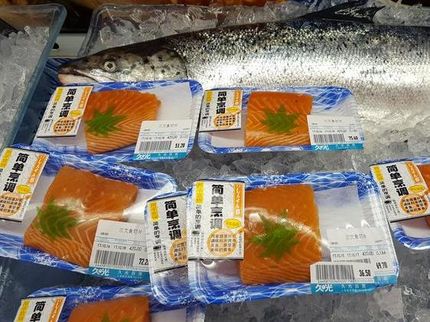Pregnant and breastfeeding women should avoid fish with high levels of methylmercury
Why saithe is the most harmful despite its low pollutant content
fish and seafood contain numerous important vitamins, trace elements and nutrients, such as vitamin D, iodine and omega-3 fatty acids. These foods are therefore a valuable part of a healthy and varied diet. However, the mercury compound methylmercury (MeHg) accumulates in fish and also in mussels, crabs and squid. How much of this undesirable substance is found in fish also depends on the species, size and age of the animal. Nevertheless, most people are unlikely to suffer any adverse health effects from eating fish and seafood: the health-based guideline value for methylmercury set by the European food safety Authority (EFSA) is not exceeded for most people. "The intake of methylmercury can be reduced by, for example, eating less fish species with particularly high levels," says Professor Andreas Hensel, President of the Federal Institute for Risk Assessment (BfR). "This is particularly important for pregnant and breastfeeding women, as scientific studies have shown that methylmercury can impair neurological development."
Methylmercury is formed when certain bacteria absorb inorganic mercury compounds that occur naturally in rivers, lakes and oceans and convert them into organic compounds such as methylmercury. These then accumulate in fish and seafood via the food chain and ultimately enter the human body when the animals are consumed. Generally, the highest methylmercury levels are measured in large and older predatory fish, such as shark, swordfish and tuna.
In order to better assess the health risks associated with consumption, researchers at the BfR combined measurement data on the levels of methylmercury in ready-to-eat foods with data on the eating habits of the population in Germany. The measurement data originate from the BfR MEAL study (Meals for Exposure Estimation and Analysis of Food), the first total diet study in Germany. For this study, food was purchased and prepared in a typical household way, i.e. fish was baked, steamed or fried. The content of desirable and undesirable substances was then determined. Combining these values with consumption - i.e. the amount of a food consumed by different population groups - gives a good picture of how people in Germany are supplied with nutrients and what amounts of undesirable substances they consume through food.
In the BfR MEAL study, the highest levels of methylmercury were measured in tuna, dogfish and redfish. Pollock has a lower content of the undesirable substance, but contributes the most to methylmercury intake in the population because this fish is eaten so much. It is found, for example, in fish sticks and many other ready-made fish dishes from the freezer. The analysis showed that the average intake in all age groups is below the tolerable amount. The EFSA's health-based guideline value is 1.3 micrograms (µg) of methylmercury per kilogram of body weight per week. If this value is adhered to, no adverse health effects are to be expected.
For adolescents and young adults between the ages of 14 and 25, the highest intake values for methylmercury - in relation to body weight - were determined. Depending on the amount and choice of fish consumed, some of these exceeded the health-based guideline value. According to the analyses, those in the age group who eat tuna in particular absorb high levels of methylmercury. One thing is certain: The likelihood of adverse health effects due to methylmercury intake increases when the guideline value is exceeded. The intake of methylmercury can be reduced by choosing species with lower levels. The consumer tips from the Federal Ministry for the Environment, Nature Conservation, Nuclear Safety and Consumer Protection (BMUV) can help with this. However, when it comes to fish, the contaminant content should not only be considered in isolation. The health benefits of eating fish should also be taken into account, including the supply of vitamins, trace elements and certain polyunsaturated fatty acids.
Note: This article has been translated using a computer system without human intervention. LUMITOS offers these automatic translations to present a wider range of current news. Since this article has been translated with automatic translation, it is possible that it contains errors in vocabulary, syntax or grammar. The original article in German can be found here.
Other news from the department science
Most read news
More news from our other portals
See the theme worlds for related content
Topic world Food safety
Food safety is at the heart of the food and beverage industry. It ensures that the food we eat every day is not only nutritious, but also free of harmful contaminants. From field to plate, the industry monitors and regulates every step of the process with strict quality controls, advanced testing methods and continuous research.

Topic world Food safety
Food safety is at the heart of the food and beverage industry. It ensures that the food we eat every day is not only nutritious, but also free of harmful contaminants. From field to plate, the industry monitors and regulates every step of the process with strict quality controls, advanced testing methods and continuous research.





























































